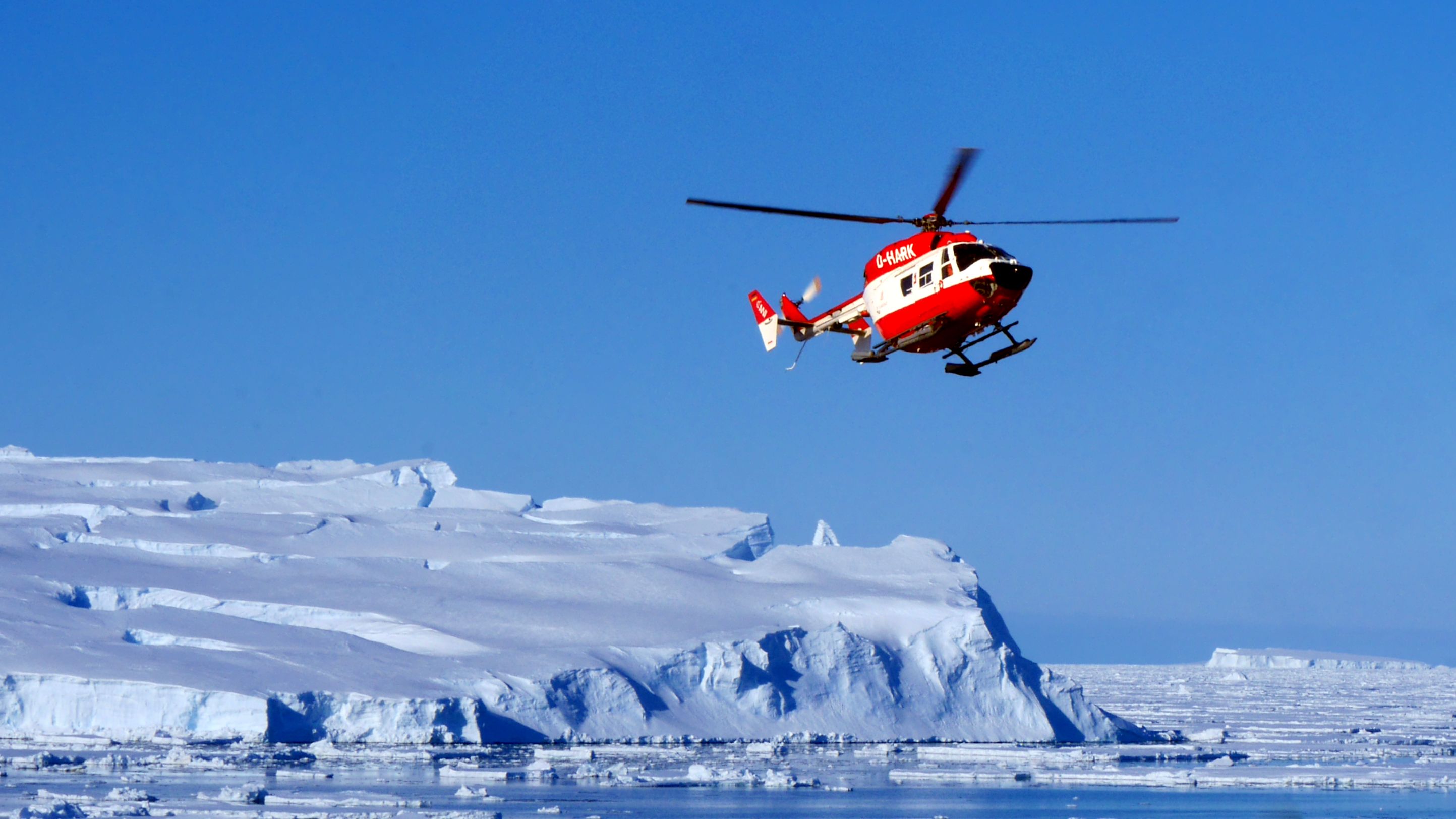
A heli day and ships in the night
This is part of a series of letters I sent home during my first research expedition, on the German icebreaker Polarstern.
You can start at the beginning here.
Yesterday we said goodbye to our land team as they started their expedition to the Thala Hills near the Russian Molodezhnaya Station. They needed all their scientific equipment, survival equipment, food, shelter, and transport to be moved from the ship to the shore by helicopter. The aircrew on board managed it all with ten flights of about an hour each, with people and cargo inside the helicopter and bigger or dangerous cargo slung underneath it. The most picturesque load was their yellow skidoo slung under the red helicopter, against the blue sky and white ice.
The ice where we were was amazing. We were in a sort of sheltered bay formed of huge icebergs, long and low, surrounding us on almost all sides. They were all grounded (despite the 500 m water depth), and of one of two forms: either the typical tabular type — a piece of ice-shelf broken away from the rest — or a much wilder-looking kind new to us, with crevasses and sharp peaks everywhere. Between them and us the water was mostly covered with sea ice, but just around our ship was largely clear, with only the occasional ice floe drifting very slowly by. Where it wasn’t covered in ice, the water was perfectly calm and a very deep blue. We were still and quiet in the middle of all this, with the sun shining on us.
Every time the helicopter came back to the ship to ferry more cargo out, the silence was broken by its very loud engines and rotor noise, but it was made up for by always being an interesting operation to watch. Just the act of landing is impressive: the helicopter is ten metres long and needs to be landed precisely on the thirteen-metre helideck. When it comes to landing on the helideck with a load slung under it (which needs to be placed precisely first and then landed next to) it’ll be doubly impressive. Then there are the difficulties of flying in the polar regions: in particular, the threat of a whiteout due to any combination of ice, snow, fog, and/or clouds all being white and hiding the horizon, leading to complete loss of any sense of direction.
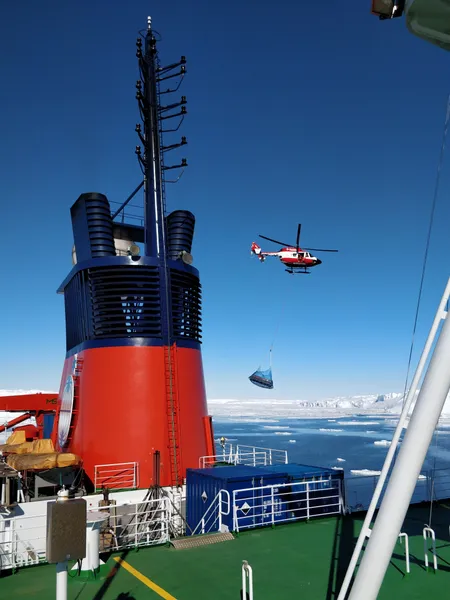
I thought the scenery and the helicopter operations were enough, but someone thought we needed more entertainment, so they sent a penguin into our midst. One little adélie penguin, who swam around near the ship emitting a surprising cawing call every now and then, and occasionally jumping out on to an ice floe. You know you’re spoilt when you’re slightly disappointed it’s “only” an adélie and not an emperor penguin.
Then the Kapitän decided this was a perfect opportunity to test the ship’s lifeboats: we have four with a capacity for 50 people each plus many inflatable liferafts, so more than enough for everyone even if one whole side of the ship is inaccessible. The four boats are kept exposed on davits (cranes) just below the topmost deck. To test them, one officer and one rating got into the boat, and then others on deck moved the davits out so the boat was clear of the side of the ship, then lowered it pretty quickly (almost dropped it, really) into the sea. Once there, the crew in the boat started the engine, let go the wires and ropes, and then did a rigorous safety test, which involved pottering around the sheltered bay we were in for a quarter of an hour or so. During one of these vital checks, our friend the penguin investigated the big orange thing buzzing about its habitat. The crew continued to test the functionality of the lifeboat — which suddenly seemed to include the process of hanging out of the hatches taking photos of the penguin — and once they were satisfied they returned to be winched back up the side of the ship.
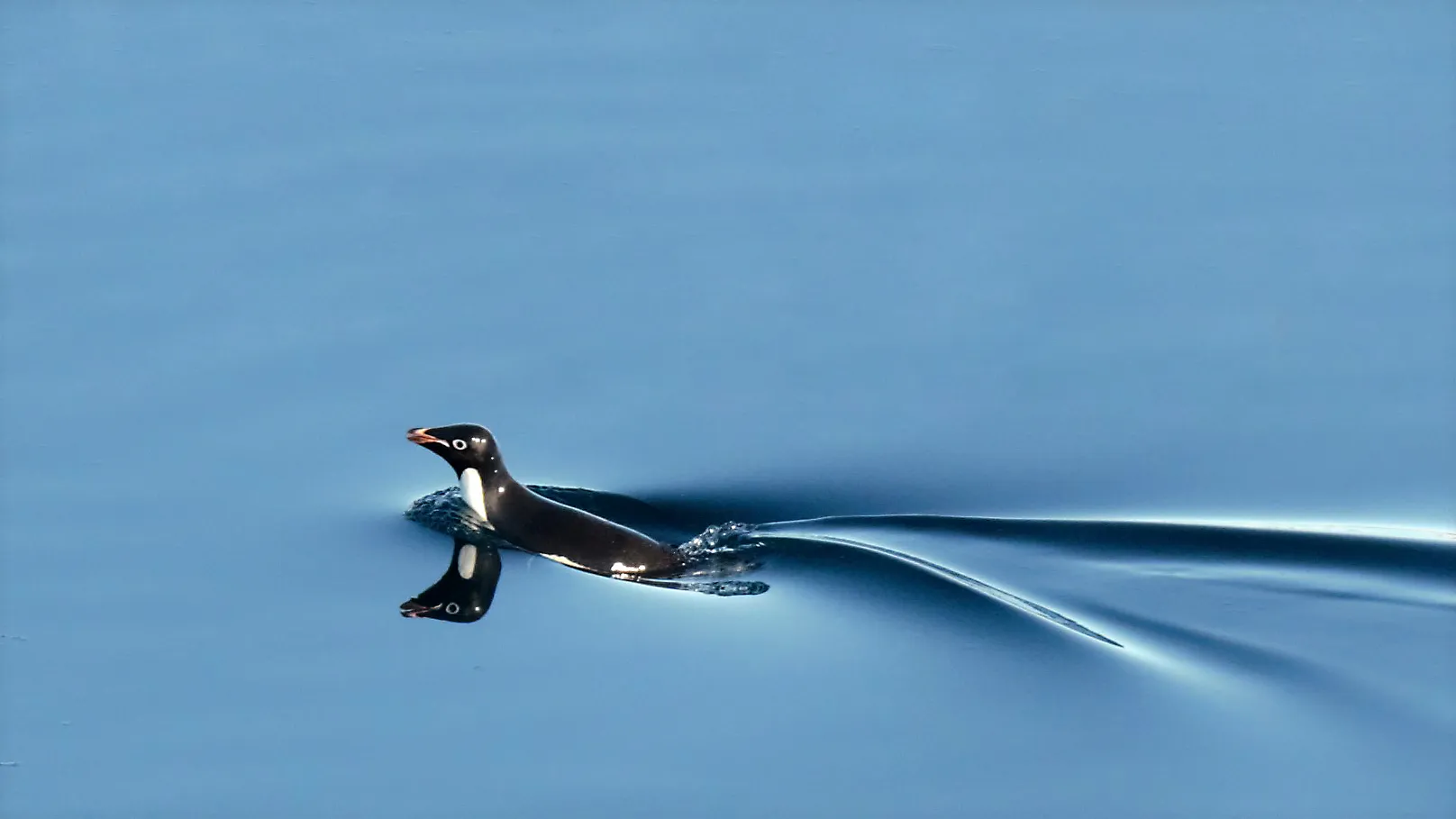
Once they were safely home the next lifeboat could be tested, each with their own responsible officers who were also anxious to test the safety of their craft in this idyllic spot. When it came to testing lifeboat 3 (my assigned lifeboat), one of the organic geochemists asked the responsible officer if he could collect some yellow snow. Some confusion followed about whether the snow should be collected white and made yellow (his affronted assumption) or collected pre-yellowed. Once it was explained that it was not a crude joke and she really did want the part of the ice where algae stain it yellow, he agreed to the mission. On his safety-test-sightseeing-tour he rather worryingly rammed into an iceberg (with my lifeboat, remember) and collected the scientific sample. Matt excitedly headed downstairs to make a microscope slide of the algae but came back put out because the snow had been swiftly spirited away.
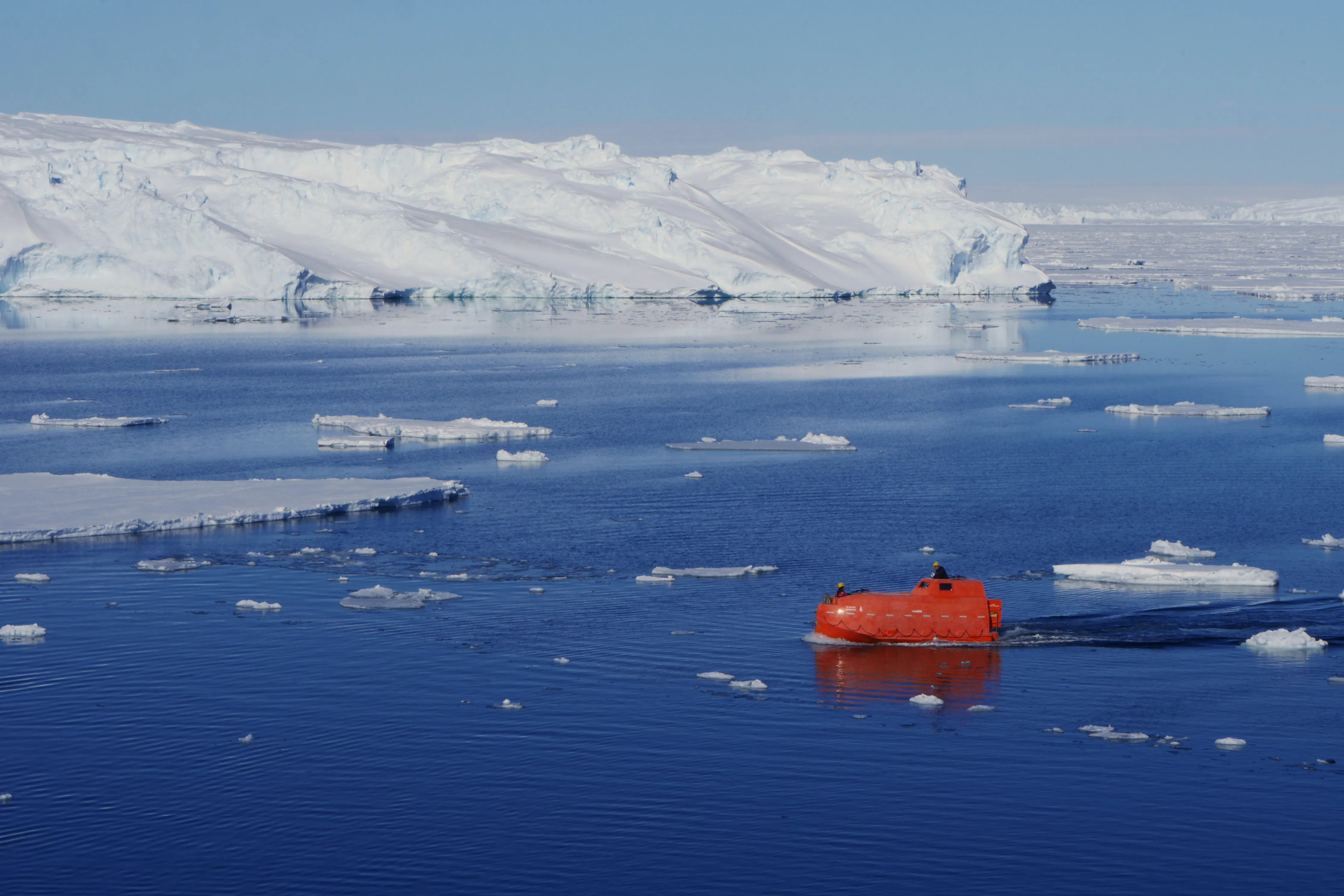
Once all the cargo had been taken to the mainland we headed back out to sea, through some pretty thick sea ice dotted with more adélie penguins (and one seal). The day wasn’t over yet though: after spending quite a long time trying to take photos of petrels wheeling about us, I went inside to meet the other members of the night shift who were drinking in the Red Saloon. While we were there, a live feed of the camera looking out on our starboard side showed two large blows from a group of whales. We all rushed outside in whatever we were wearing and got out in time to see about four or five fin whales blowing and surfacing repeatedly for a few minutes. Once we lost sight of them and realised how cold we were, we headed back inside where we met someone who had been on the bridge watching them and had followed them aft. The blows had been spotted on the bridge a while ago, and by their size were assumed to be one of the biggest species of whale — either blue whales or fin whales. When they got closer the MMOs could confirm they were fins.
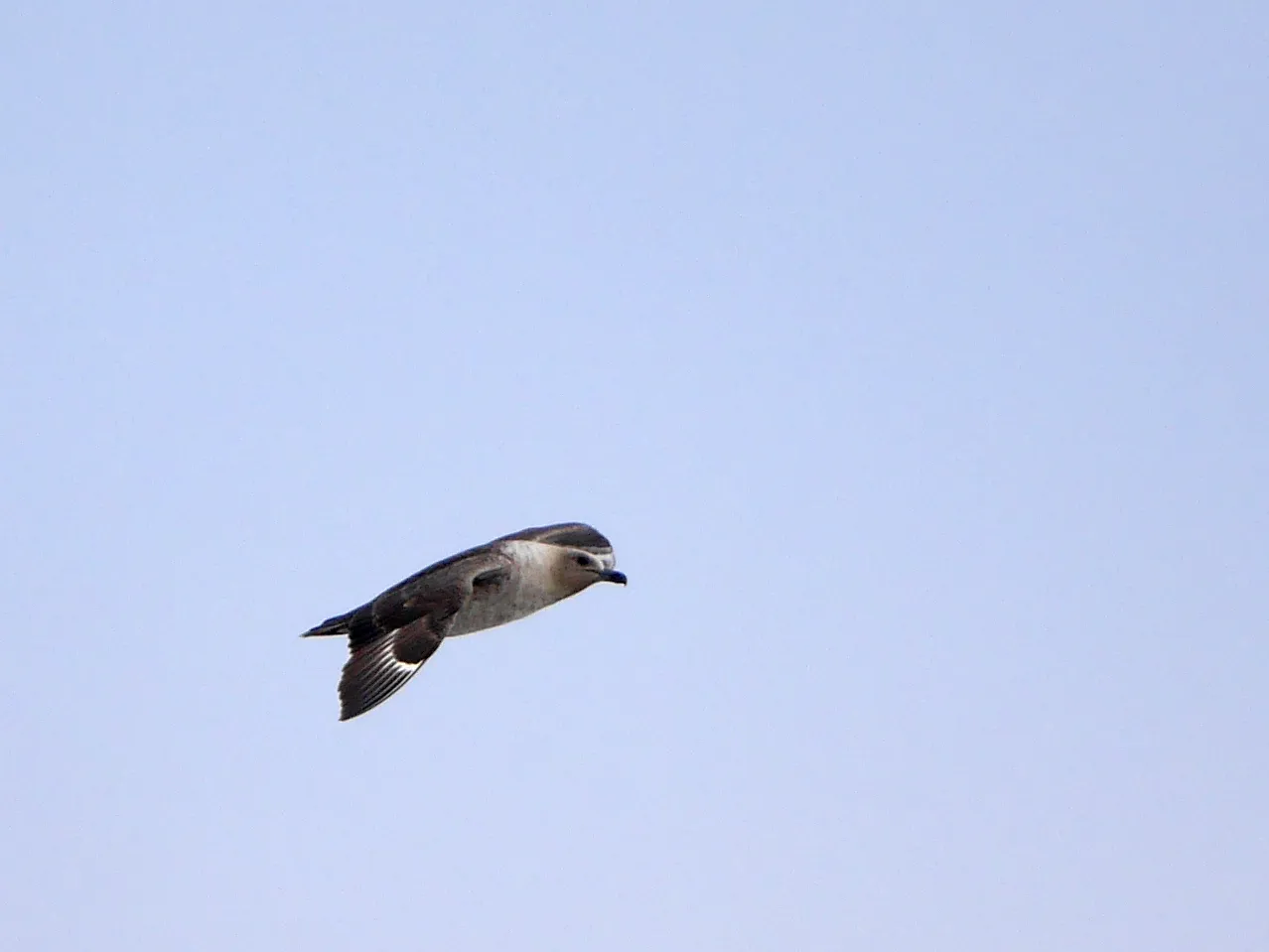
Later we heard someone casually mention that we were going slowly because we were about to meet a Chinese research icebreaker. This came as a complete surprise — we had expected to rendezvous with the Australian RV Investigator, but (if you remember) they had been forced to cancel their cruise due to covid cases on board. I don’t think anyone was expecting this Chinese ship, but the bridge had seen her on the radar and set a course to intercept.
We rushed up to the bridge to see what was happening, which incidentally answered our questions regarding where everyone else was: everyone who wasn’t asleep was there. When we arrived, the ship was on the horizon in front of the setting sun (we’re near the Antarctic Circle again) and we were approaching each other slowly. She was about the same size as us but red (of course) and called the MV Xue Long 2 (literally “Snow Dragon 2”). Our Captain, Moritz, radioed them in English to establish contact and then handed over to one of the seawater chemists on board. He translated the message the Chinese captain sent: “He sends greetings from China. He says it is a pleasure to see you in such a remote place, and he wants to wish you a happy [Chinese] new year”. Moritz said the same back, and then our translator talked a bit more to the captain, who said he had a scientist on board who had been on Polarstern before and could speak some English. When this new voice started by saying in English “Hello Captain Moritz and Professor Ralf. This is Xue Long 2. Greetings!” I was suddenly hit by how incredible this was — two research icebreakers from very different cultures meeting at the ends of the Earth by chance. This disembodied man’s voice representing the first ship — the first other people — we’d seen since January was addressing our captain and chief scientist by name and sending all of us his greetings. I think everybody else felt it too, because the bridge was hushed and expectant, with a lot of incredulous smiles around.
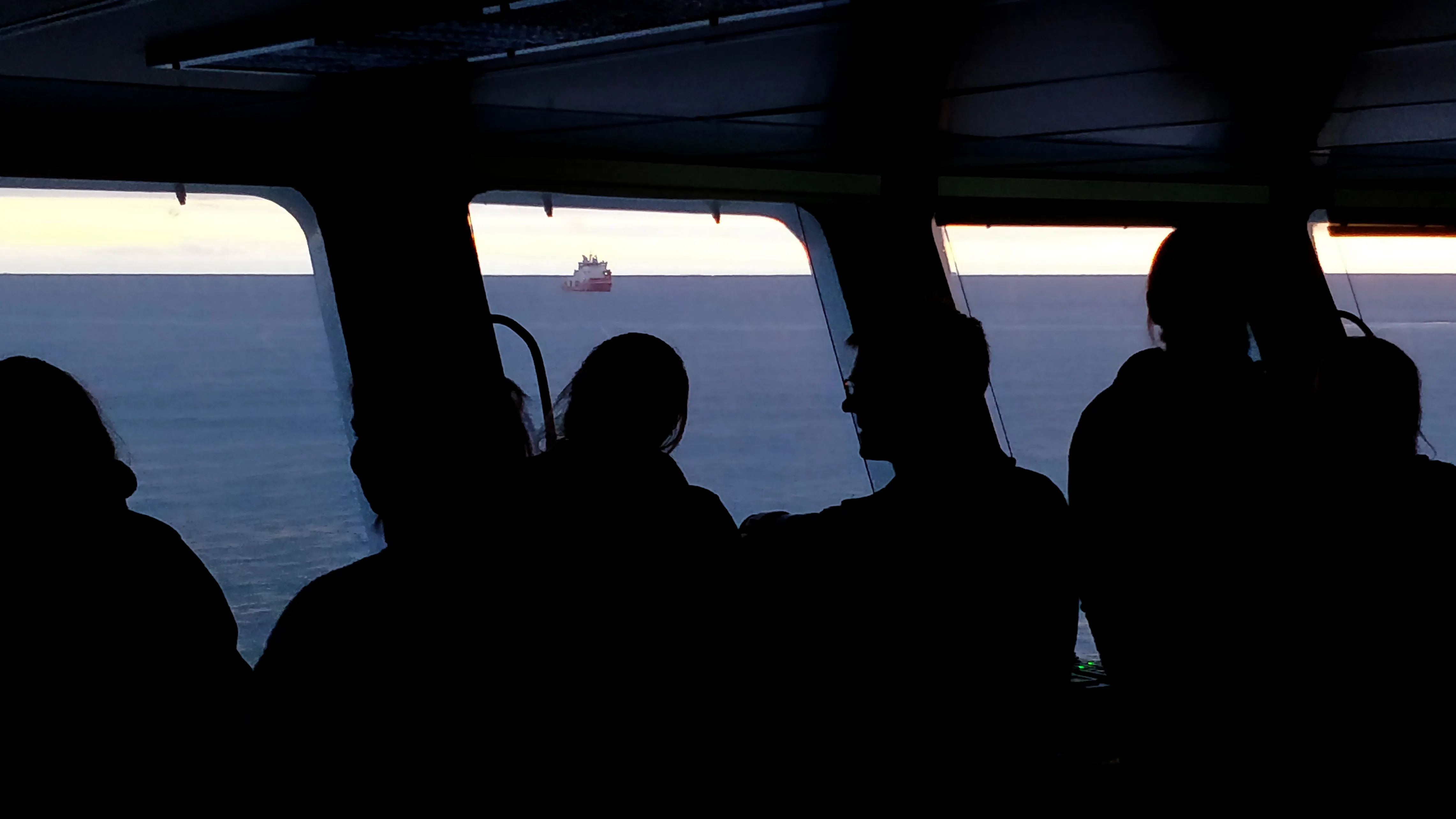
We didn’t stay for long — we were quite literally two ships passing in the night — but the feeling persisted, and apparently the Xue Long 2 is planning a similar route to us, so we may see her again; our companion in this remote corner of the planet. It really is remote now: more so than during the last month. We’re no further south (in fact we’re quite a bit further north), but we’re much further east. We had been working about level with the UK, but we’re heading for an area level with Pakistan. Few people ever come here so we have a lower level of satellite connectivity (no photos or videos), and the captain has asked our bathymetry team to call him urgently if they detect the water depth getting shallower than 200 m — the charts around here are very sparse, if not blank. We are at times quite literally sailing in uncharted waters.
Good job the lifeboats have been well and truly tested.